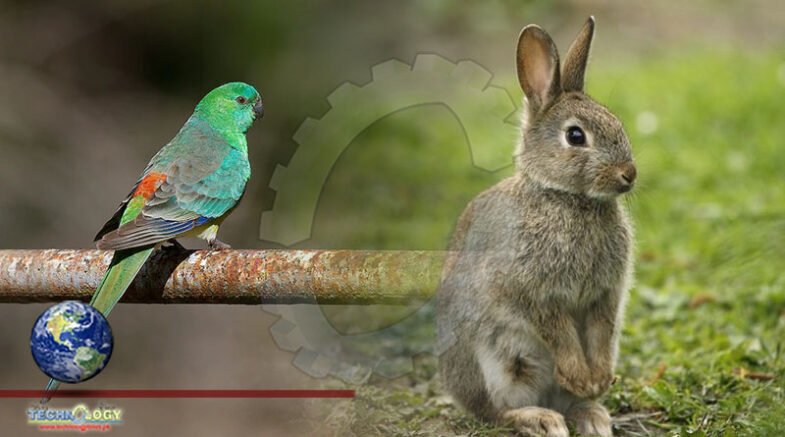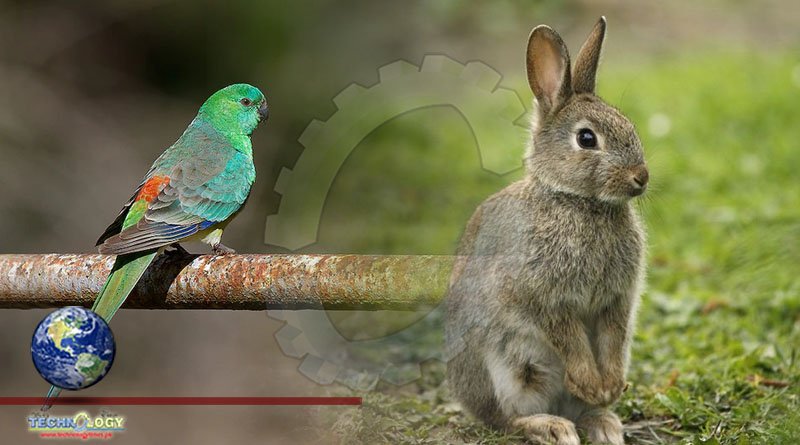The body parts have had to increase in size in some animals, so they can lower their internal temperatures, as the Earth’s climate has warmed.

Climate change is having a direct impact on the bodies of animals, causing their shapes to transform.
No, we’re not luring you into an episode of Animorphs — rather, a review of published scientific data from around the world has found that, to cope with rising temperatures, many animals and birds are “shape-shifting” to cool down.
This shape-shifting has seen an increase in the size of appendages — such as beaks, legs and ears — that play an important role in regulating body heat for animals.
These body parts have had to increase in size in some animals, so they can lower their internal temperatures, as the Earth’s climate has warmed.
“This proportional increase in relative appendage size, and therefore subsequent change in body proportions, can be referred to as ‘shape-shifting’, and is an under-appreciated response to climatic warming,” the review, published in the journal Trends in Ecology and Evolution, states.
“Changes in the ecology and life history of animals due to global environmental change are no longer a theoretical concept, but a reality.”
Cockatoos and parrots show ‘striking’ change
In cooler climates, warm-blooded animals tend to have smaller legs, ears, tails and beaks to minimise heat loss.
In warmer environments, their legs, ears, tails and beaks tend to be larger, to increase the area that heat can be lost from.
The researchers wanted to see whether animals might be responding to climate change and the associated temperature increases by changing the shape of their bodies.
They examined data on average temperatures and short-term temperature extremes, as well as data on appendage size.
“Specifically, we’ve been looking at whether animals are increasing … the surface area of these appendages as a way to deal with the increased temperatures,” review co-author Sara Ryding from Deakin University told the ABC’s AM program.
Space to play or pause, M to mute, left and right arrows to seek, up and down arrows for volume.
They found “extensive evidence” of this shape-shifting in some bird species in Australia, including the red-rumped parrot and the gang-gang cockatoo.
“Gang-gang cockatoos and red-rumped parrots, which are both found throughout parts of Australia … have increased their beak size by around 4 to 10 per cent since the late 1800s,” Ms Ryding said.
Other bird species that have shown an increase in beak size are house sparrows in New Zealand and America, North American dark-eyed juncos, and Galapagos finches.
“I think that it’s very alarming, but impressive, that there is so much widespread evidence for this,” Ms Ryding said.
“And that it’s happening to such a broad range of animals and across broad geographic scales.”
Shape-shifting across the world
While many of the review’s findings concerned birds, there was evidence of shape-shifting in other warm-blooded animals across wide geographical regions.
Great roundleaf bats in China have shown an increase in wing size, and masked shrews in North America have grown longer tails and legs.
An increase in ear length has been noted in wood mice, which are common in Europe, and in European rabbit species in Australia.
“The increases in appendage size we see so far are quite small — less than 10 per cent — so the changes are unlikely to be immediately noticeable,” Ms Ryding said.
“However, prominent appendages such as ears are predicted to increase, so we might end up with a live-action Dumbo in the not-so-distant future.”
But Ms Ryding cautioned against assuming this shape-shifting was a positive part of the evolutionary process.
“I think people might … think, ‘oh, great, animals are responding or evolving to deal with climate change. That means that they won’t be affected by climate change’.
“And I just want to say that no, that’s not true, and that’s not what the takeaway message should be from this.
“The takeaway message really is that the climate change we’ve experienced so far is already pushing animals to evolve like this, and we don’t know if they’ll be able to keep up as the climate crisis worsens.
“We don’t know really how this is affecting their survival and other aspects of their ecology.
“So their ability to increase the size of things like their beaks is only going to go so far.”
“As we reckon with the effects of current anthropogenic climate change, the capacity to predict the future is crucial,” they state.
“In order to do this, continued study that combines multiple information sources, such as long-term field data, analysis of museum specimens, molecular data, and temporal trends, needs to be prioritised.”
Source ABC.net
